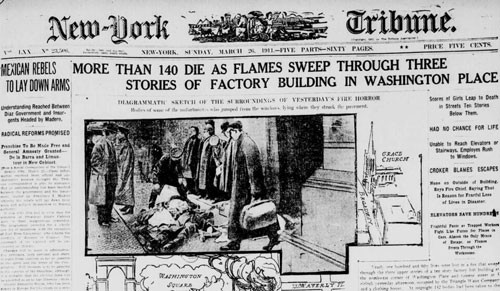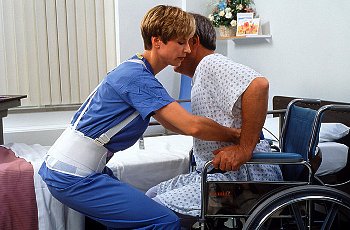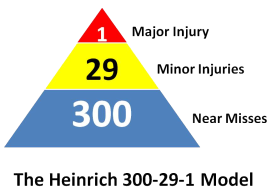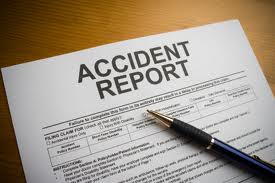Everyone knows that working in construction can be dangerous. Most major construction projects involve working in excavations and trenches, working from scaffolds, and using heavy machinery to pour concrete for building walls and foundations. Working in factories and healthcare centers can be just as dangerous. There are countless incidents involving employees being injured on assembly lines, or tripping and falling because of hazardous walking surfaces. Healthcare employees risk back injury when lifting patients from beds to chairs or transporting them for x-rays or for physical therapy and other services.

Over the years, fire in the workplace has claimed the lives of many workers. In 1911 the New York Triangle Waist Company fire was responsible for the death of 146 workers. If we study the reasons for the fire and the catastrophic loss of life we would learn that cluttered work spaces, locked exit doors, and rusted fire escapes all contributed to an incident that could have been prevented. Unfortunately, the Triangle Waist Company fire was also caused by poor working conditions that have been eventually improved to protect workers.
Accidents, Incidents & Near Misses Can Be Prevented
Is there a relationship between near-misses and accidents? Is it possible to recognize existing and predictable near-miss hazards and correct them before they develop into accidents? What is the definition of a near-miss? How should we define an accident?
Let’s look at the following scenarios to get a better idea of how they differ.
A team of iron workers have been assigned to replace defective structural beams and make other necessary repairs on the bottom level of a bridge that spans a river. Because they are working on an elevated structure they each use a personal fall arrest system. Every morning they discuss the job over coffee. They use this time to evaluate the identified job hazards. Using a full body harness is the suggested method of fall protection for this project. As one of the workers was donning his full body harness a co-worker noticed that his harness strap was partially torn. How would you classify this incident? Would you call noticing the torn harness a near-miss, or an accident?

We’ll continue this scenario by supposing the torn harness strap has gone unnoticed. As the iron worker positioned himself on a beam, to cut away rusted bridge supports with a torch, he loses his balance and falls. Although he was properly tethered to an anchor point, his torn harness failed and he falls to his death. How would you classify this incident? Would you call this a near-miss, or an accident?
Here is another scenario. The manufacture of metal door frames is more involved than one would realize and can be a dangerous process if hazards go unidentified. After the material to make the door has been chosen, there is a process that uses automated machinery to build the frame. Several work stations in the plant are designed to cut or “shear” the selected piece to specifications, an automated punch press and several “forming” press machines are used before the frame pieces are welded together.
The welded joints are manually ground down to remove rough edges and create a smooth surface for painting. As you would imagine, for this manufacturing plant to operate efficiently, the machinery must be in good working order and all power “cut-off” devices must be functioning correctly if something should go wrong. The workers are well trained and experienced. The aisles, floors, and countertops are clear and good housekeeping is implemented to eliminate slips trips and falls. So what could go wrong? Let’s go back to the “grinding section” of our scenario. Before donning his personal protective equipment, consisting of head, eye, face, and hearing protection, the operator inspects the grinder. A close inspection reveals a slice in the electrical cord. The wire’s insulation has been cut exposing the copper wires. How would you classify this incident? Would you call this a near-miss, or an accident?
What would have happened if the operator did not thoroughly inspect the tool and the exposed copper wire had come in contact with the metal frame? What are the consequences of not inspecting the tool thoroughly for defects? He very well may have been electrocuted. How would you classify this incident? Would you call his electrocution a near-miss, or an accident? As you can see hazards are present whenever and wherever we perform work.
 Here is one more example involving a healthcare worker. A nurse needs to move a patient from his bed to a wheelchair. The hospital’s budget is tight and they are short of staff. Not following hospital safety rules about using two people or a mechanical lifting device has never stopped her before from doing this alone. After all, she may not be as young as she once was but she feels she has become experienced over the years and knows how to do this safely. Unfortunately, she is older and this particular patient is not cooperating with the transfer. The result is a pulled back muscle. Is not following procedures a near-miss? Would you classify her injury as a preventable accident?
Here is one more example involving a healthcare worker. A nurse needs to move a patient from his bed to a wheelchair. The hospital’s budget is tight and they are short of staff. Not following hospital safety rules about using two people or a mechanical lifting device has never stopped her before from doing this alone. After all, she may not be as young as she once was but she feels she has become experienced over the years and knows how to do this safely. Unfortunately, she is older and this particular patient is not cooperating with the transfer. The result is a pulled back muscle. Is not following procedures a near-miss? Would you classify her injury as a preventable accident?
How are Near-Misses and Accidents Defined?
The Occupational Safety and Health Administration (OSHA), defines the terms “near-misses” and “accidents” in the following ways.
An “Accident” is defined as an unplanned event that results in personal injury or property damage.
An incident is defined as an unplanned event that does not result in personal injury but may result in property damage or is worthy of recording.
Did you notice that the word “unplanned” is used in both definitions? Are incidents unplanned or can hazards be identified and corrected before an event happens? A near-miss is usually caused by a series of dangerous conditions that when unnoticed will eventually result in an accident.
How Can We Recognize Workplace Hazards?
Can we predict when and where an accident will occur? Over the years several studies have been conducted to try to determine how many near-miss events would result in an eventual accident. The same studies further attempted to determine how many reported accidents would finally lead to a worker fatality. In 1931, Herbert William Heinrich, an American engineer, wrote a book titled “Industrial Accident Prevention, A Scientific Approach”.
In the Heinrich 300-29-1 model, Heinrich suggests that for every 300 near-misses there will be 29 minor injuries and 1 major injury. Since then the methods he used to determine the relationship between near-miss events, accidents, serious accidents, and fatalities have been challenged by some safety professionals.

Some feel that Heinrich’s “Safety Triangle”, which places near-miss events at the base of the triangle, accidents in the middle and finally fatalities at the top, may cause companies to believe that by eliminating near-miss events alone accidents and fatalities will eventually disappear.
Sometime later, the Insurance Company of North America conducted a more in-depth study reviewing the cause of almost 2 million injury accidents. They determined that Heinrich’s “Safety Triangle” and the results of their study were pretty much in agreement. It should be noted that all companies are not alike and they may have specific hazards in the workplace. However, the triangle theory does help us to understand that major accidents and fatalities may be avoided by making a practice of investigating all near-misses and accidents.
Take Steps to Avoid Near-Misses and Accidents
- The first step is to develop a Job Hazard Analysis (JHA) to identify and evaluate possible ways employees can be injured while performing specific tasks. A job hazard analysis is a technique that focuses on job tasks as a way to identify hazards before they occur. It focuses on the relationship between the worker, the task, the tools, and the work environment. Ideally, after identifying hazards, we can take steps to eliminate or reduce them to an acceptable risk level. For more information about how to develop a Job Hazard Analysis you can visit OSHA’s website at https://www.osha.gov/Publications/osha3071.pdf.
- The second step would be to set the example. To effectively control the occurrence of near-misses and accidents upper management must buy-into the program. Advertise the program to employees by using visual reminders such as safety posters and memos, along with providing proper safety training. Dedicate a portion of a work day to safety. Have employees identify and evaluate unsafe conditions in their immediate work locations. Make a list and assign employees to correct the unsafe or potentially unsafe conditions. Get your employee’s families involved in the program by having a children’s safety poster contest. Display all the posters in your workplace. Having a family member’s safety poster in the workplace is a powerful tool that can be used to remind employees to work safely.

The third step is to investigate and record all near-misses and accidents. Educate employees about the root cause of the incident. Keep a record of the events, so you can analyze and trend occurrences involving outdated policies, incorrect operating procedures, defective equipment, and even unsafe employee practices.
So, how does your company define a near-miss or an accident? Do these events only get the attention of upper management when someone is admitted to a hospital or your company makes the headlines, or worse? Your company’s definition of near-misses and accidents, and how you address them, will reduce the risk of coming face to face with an “unplanned” event. How can your company avoid near-misses and accidents? A good place to start would be to acknowledge that “a stitch in time does save nine” or in this case find the root cause of near-misses and accidents and adopt a hands-on policy to prevent them. Implementing safety in the workplace doesn’t cost much when it’s already part of the culture.
Let us know some unique ways your company has implemented to help reduce near misses and prevent accidents. Spreading awareness of successful strategies can help others who may be struggling with this important aspect of workplace safety.



